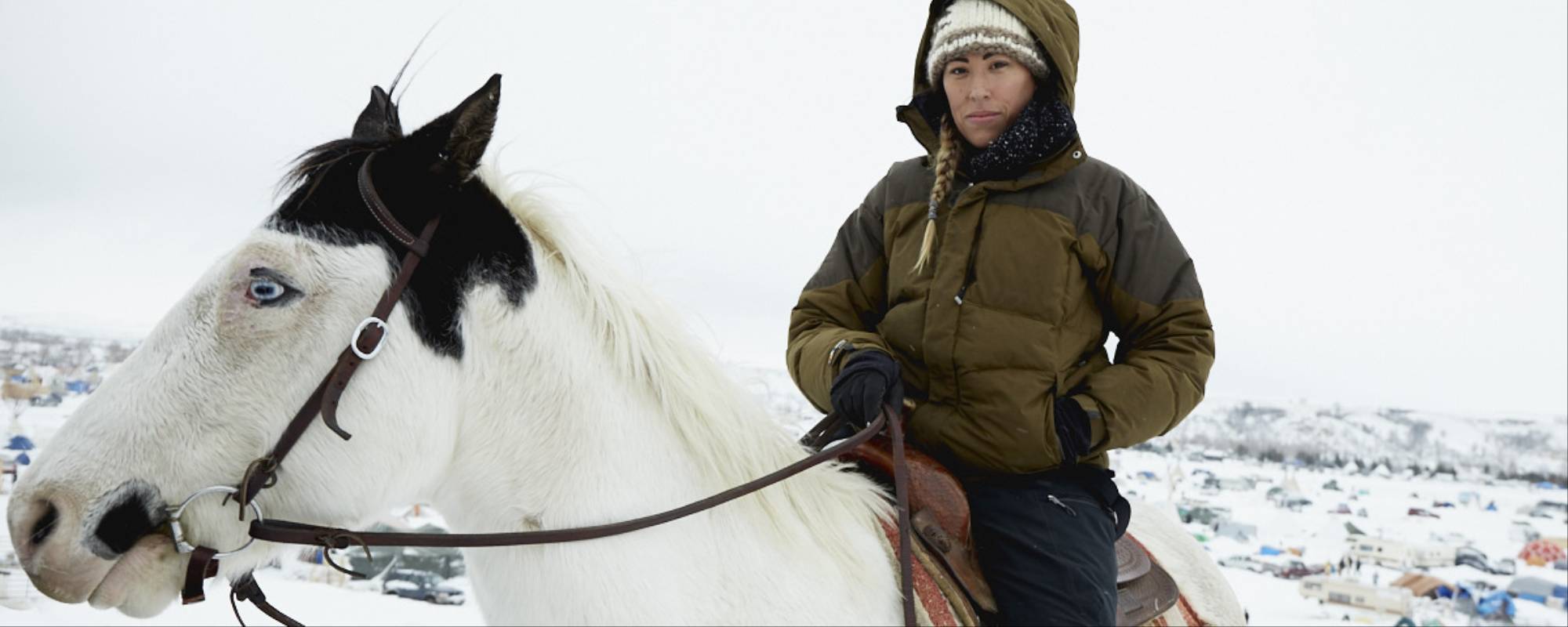'Miracles Are Happening': Photos of the Tireless Women of Standing Rock
Thanks to the efforts of Standing Rock protesters, the controversial Dakota Access Pipeline has been diverted. Photographer Celine Guiout went to Standing Rock to shoot the women who made it happen.
Over the weekend, the US Army Corps of Engineers finally delivered some good news to the thousands of protesters camped out at the Standing Rock Sioux Reservation: Construction of the Dakota Access Pipeline would be halted.
The proposed pipeline would have carried crude oil underneath Lake Oahe, a dammed-up part of Missouri River and the main water source for the reservation. The Sioux tribe has repeatedly expressed concerns that the pipeline could lead to contamination of their water supply and threaten its water and treaty rights.
After months of the stand-off involving protesters (who call themselves Water Protectors) and police, the Army Corps announced on Sunday that it would not grant permission for Dakota Access LLC (DPL) to drill under the river. In a statement, it said that it would instead "explore alternate routes for the pipeline crossing."
For the thousands of protesters—comprising of members of the Sioux Tribe, indigenous people from across America, non-indigenous allies, and veterans—camped out at the Standing Rock Indian Reservation, the news came as welcome relief in the biting cold. It was the culmination of an intense struggle that involved shocking levels of police brutality.
Photographer Celine Guiout photographed and interviewed the women of Standing Rock a week before the Water Protectors were told that their months-long test of endurance and activism had paid off. "Women are definitely a driving force in this massive gathering," she tells Broadly. "All the women I had the chance to meet throughout my stay were incredibly optimistic about the outcome and peaceful resolution of the current situation. These women were completely unmovable in their faith."

All photos and interviews by Celine Guiout
Beatrice Menasekwe Jackson from the Tsimshian tribe in Ketchikan, Alaska, now living in Michigan
We are here because as women, we are caretakers of the water and caretakers of the earth. We want the Earth to be in good condition so the water that goes through our bodies helps our children to be healthy and grow up strong in mind, body, and spirit. We want them to have the balance that they need here in creation, so they won't be torn apart by political parties by color, race, or gender. We're going to make a more beautiful world for them.
I'm here also because my children can't be here. I'm going to go home and tell them everything I've seen, so that when my time of not-travelling comes they will be able to go out and do that for me. Even though I'm a great grandmother, I took my own pension [from being a] retired teacher and made the journey. It's all worth it, being here and sharing with the women our songs and the water prayers.

Bibi, from the Juaneño tribe in San Juan Capistrano, California
Why am I here? Oh my gosh, it starts way back when I was a little girl—it was born in me. You can't take what's in you away, and that's your spirit, [knowing] your ancestors and your families have suffered enough. I have suffered enough. Natives are not going to take it anymore because you can't take from us no more. You take away our land, you take away our pride, you try to take away everything. They have stripped us of everything, [but] not no more. We're here till the end, and I have hope that we're going to beat this. Ever since I was a little girl I knew I had a big important purpose in life and when it came time for this I knew it was it. Ever since I've been here there hasn't been [anything] but good things happening. Miracles are happening at Standing Rock, and it's not going to stop.

Cortney Collia from Kalamazoo, Michigan
For my personal experience in Kalamazoo, we've had the largest inland oil spill in the United States. It was years ago, in 2010, and that water still isn't clean. They said they cleaned [it], but I work right along that river teaching kids and they aren't allowed to go into the water anymore. If they do, they end up with a rash, and you can see a sheen on the surface still—the grass is dying and so are the trees. I work at a nature center and for education purposes I take the kids canoeing down the river, [but] I can't let them splash around or swim like kids should in water. We are trying to teach them about the importance of taking care of nature and resources. Our bodies are 70 percent made of water and it keeps us alive, and having warnings [telling kids] not to touch the water is heartbreaking. I can't let that happen to anybody else. So I made my journey here multiple times, to make sure it doesn't happen again.

Vanessa Castle and her horse, Medicine Hat, from the Lower Elwha Klallam Tribe in Port Angeles, Washington
I got here over a month ago—drove out here for nine hours by myself. I came out here for mine and the future generations; to protect the water and also to stand up for the rights of our tribes. As indigenous peoples, we are constantly battling with prejudice and injustice, and as a woman without any children in my family it was my turn to come and stand for what we believe in. I'm here to protect the resources that we have rights to.





Geen opmerkingen:
Een reactie posten